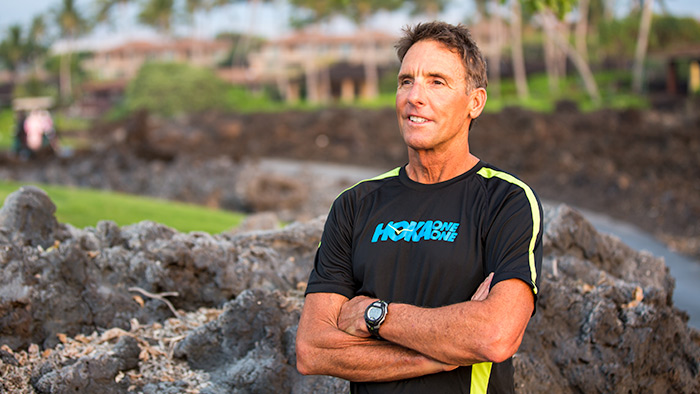Well, as any of you who swim in my groups know, I’m not a big fan of a bagful of swimming accessories! Too many athletes overuse pull buoys and floaty drag pants and other gizmos and they become crutches that prevent them from truly improving. However, the one piece of gear that I recommend for triathletes of all levels is fins!
Swimming with fins: what's the difference between long and short fins?
A weak core often causes a weak kick. When combined with very tight hips, weak gluteals, poor plantar flexion and a stiff back, a triathlete can definitely benefit from kicking drills.
Also, when faced with the issues mentioned above, the freestyle kick provides neither propulsion nor stability. The legs end up with either too much knee flexion or a spaghetti-like wobble that create excess drag. Many triathletes exhibit a kick that resembles a pedalling action: they have a dramatic knee bend that creates huge drag by dropping the hips, quads, knees and feet too low.
Instead they should kick from the hips with a much straighter leg, with no more than 20° knee flexion. Maintaining this straighter-leg position requires increased mobility in hip extension and generally good plantar flexion. This is where training with fins can help.
When used properly, fins teach the conservation of energy and provide stability without lateral wiggling. The wide silhouette of fins can initially amplify the problems, which ultimately leads to effective corrections. Then, when the fins are removed, the neuromuscular pathways will feel enlightened and stimulated!
When choosing a swimming fin, you want ones with adequate pliability, without being flimsy. Most triathletes don’t have very good plantar flexion, or good mobility in the hips and back, so a moderately flexible fin helps you establish good form and improves your flexibility over time. The ones I prefer are the Finis Edge fins.
How to get started with fins
You can begin working fins into your sets by following these guidelines and progression.
I like to focus on two primary kicks: back flutter and back dolphin. These kicks keep your hips in a neutral or extended position, which activates the glutes, stretches the hip joints and fires the quads and hamstrings. Additionally these back kicks apply a dynamic stretch to the foot flexors, which – over time – will improve plantar flexion. When doing these exercises think about pointing your toes, gently tightening your core and squeezing your glutes!
Once the back kicks have been mastered, turn over and add freestyle with both paddles and fins. This will allow a longer front end to your stroke and you’ll feel the upbeats and downbeats of the kick. Kick from the hips and not from your knees!
While doing freestyle, introduce drills with fins and one paddle, then opposites with one paddle on the left hand and one fin on the right foot. You’ll feel an asymmetry that will help you focus on mechanics.
In my groups, we typically use fins 2 to 3 times per week. We’ll do 300m to 800m kicking with fins (depending on the ability levels). These sets can be integrated into the warm-up and cool-down of the workout, or be combined with skill sets.
Implementing 2-3 sets spread out within the workout is a great way to introduce the use of fins.
If you’re just beginning, start with brief fin sets, such as 4-12 x 25m. Kick hard when wearing fins to learn the mechanics and when you remove your fins hold your core firm, and minimise the leg wiggle and hip swing. When you kick with a straighter leg with less depth, you’ll discover that your kick stabilises the front end of your stroke. For triathletes the benefits of an efficient kick include the conservation of energy and the enhancement of body position. A ferocious kick is a waste! It will only contribute to overall body fatigue, needlessly elevates heart rate and squanders the energy required for the bike and run.
Practise your kicking drills with good swimming fins, and you’ll soon reap the benefits in all three disciplines. See you in the pool!
Dave Scott is the first 6x IRONMAN World Champion and a Master Coach of IRONMAN U. As the founder of the Dave Scott Multisport Institute, he dedicates himself to making triathletes of all levels faster and more efficient. Learn more at www.davescottinc.com
